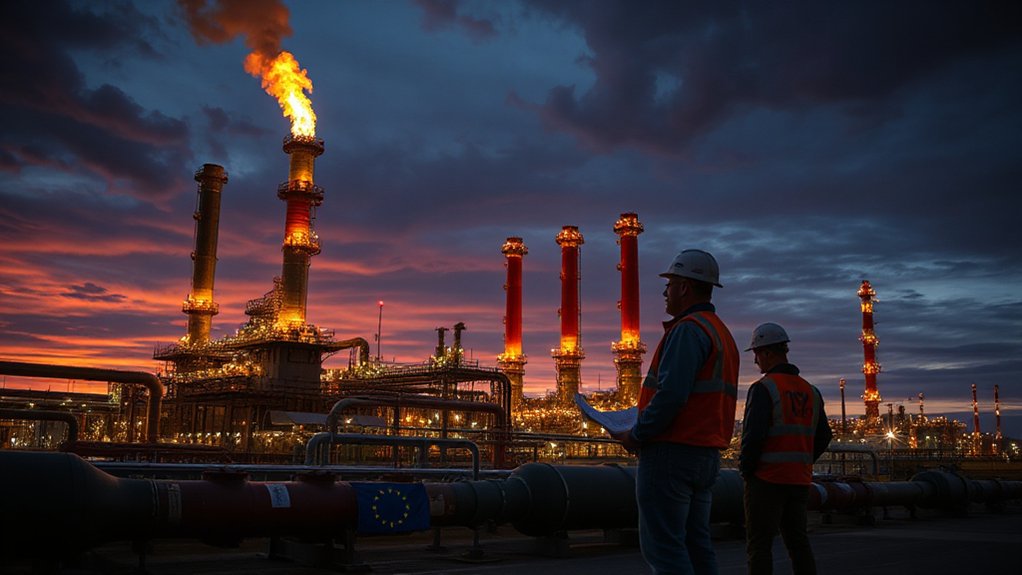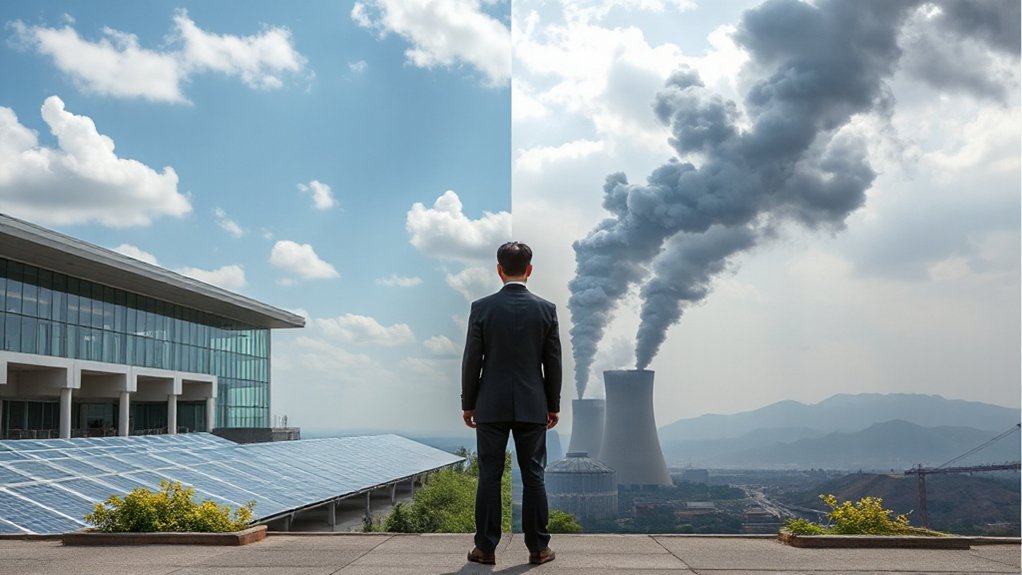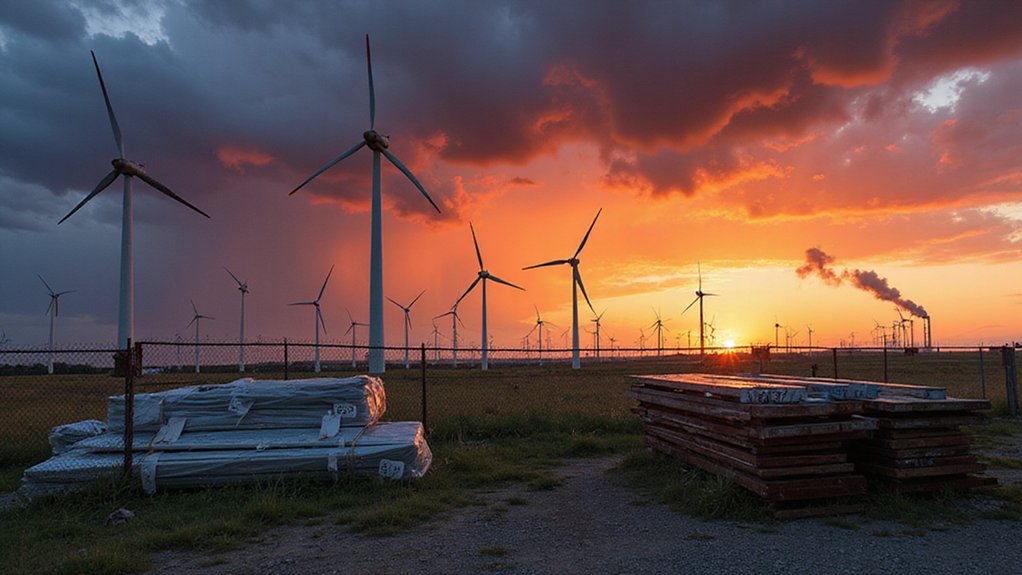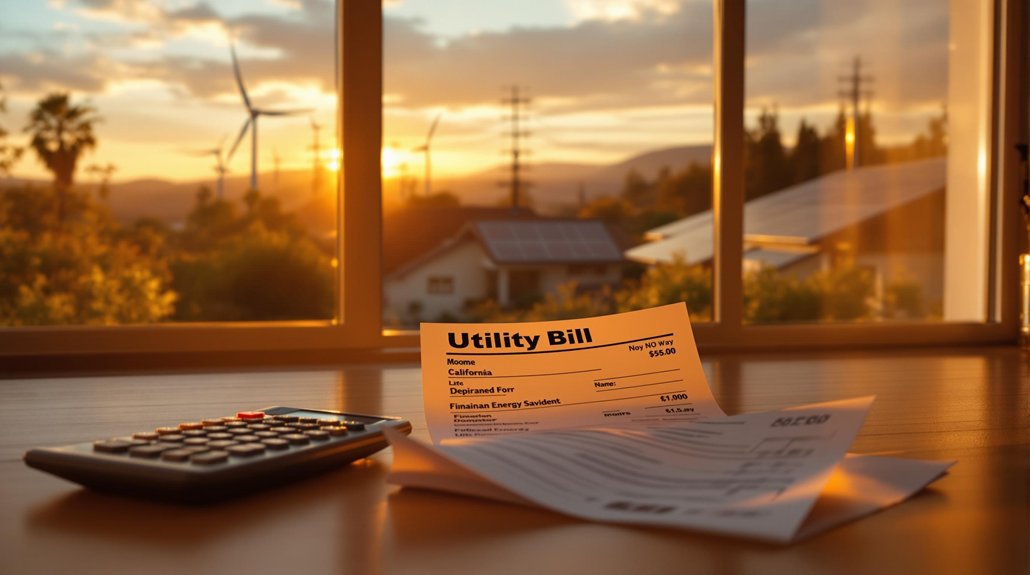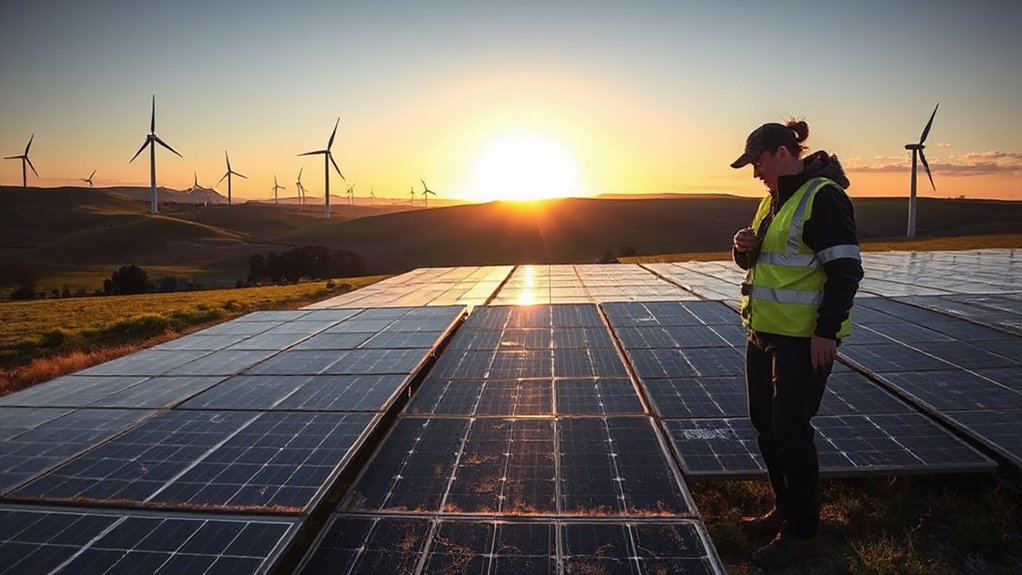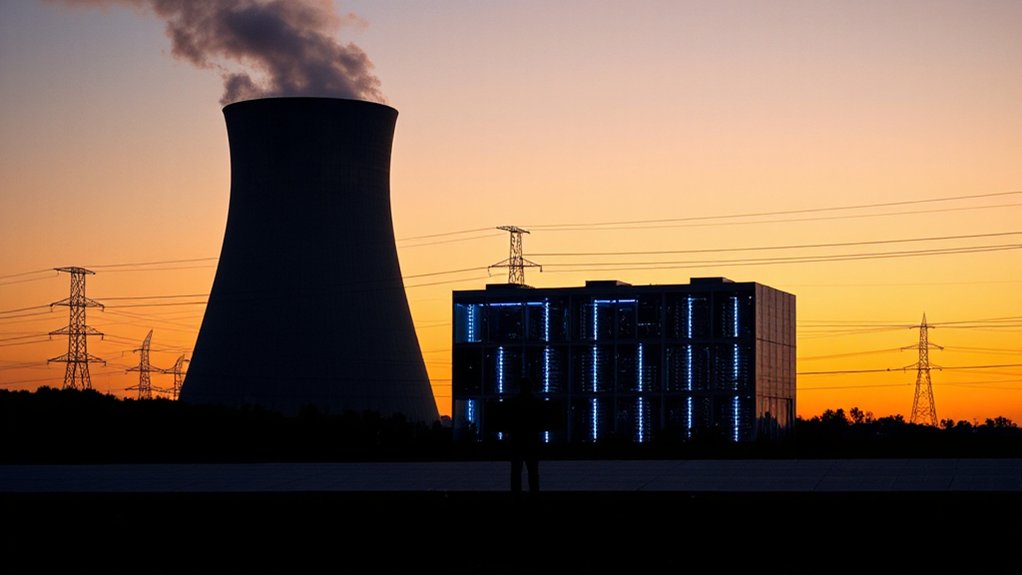European gas executives are sounding the alarm as the EU’s ambitious green agenda tightens its grip on their industry. With the bloc planning to ditch Russian oil and gas by 2028, gas companies are scrambling to figure out what comes next. It’s not looking pretty.
The EU isn’t messing around this time. Their climate neutrality goal for 2050 is legally binding, with a hefty 55% emissions cut required by 2030. That’s tomorrow in energy infrastructure terms. The Emissions Trading System reforms are particularly brutal for gas players—they’re losing those cozy free carbon allowances starting in 2026.
The EU means business with climate targets that spell doom for gas companies clinging to their carbon-heavy comfort zone.
Carbon prices have bounced between €50 and €100 per tonne. Do the math. It’s expensive. The new Carbon Border Adjustment Mechanism will squeeze imports too, forcing global suppliers to clean up or pay up. Double whammy.
Money is already fleeing the sector. The European Investment Bank has pulled the financial rug out from under fossil fuel projects. Try building a gas terminal when nobody wants to fund it. Good luck with that.
Meanwhile, the EU is pushing electrification and hydrogen like they’re the cool new kids on the block. The bloc has set ambitious targets for renewable energy sources to represent 42.5% of final energy use by 2030, far above current levels. Gas? That’s so 2010.
The industry’s complaints about regulatory burden and permitting complexity aren’t winning much sympathy. The EU’s omnibus simplification package aims to cut administrative costs by €6.3 billion, but gas companies see little relief coming their way. Public opinion has shifted. Gas is increasingly viewed as yesterday’s solution, not tomorrow’s. Reputational damage is real and getting worse.
What’s particularly worrying for gas executives is the prospect of stranded assets—billions in infrastructure that might become worthless before it pays for itself. The shift timetable keeps accelerating. The market is contracting.
China isn’t helping either. Their dominance in clean tech supply chains means Europe’s industrial competitiveness is already on shaky ground.
Gas may be cleaner than coal, but that argument doesn’t carry the weight it once did. The message from Brussels is clear: adapt or die. Europe’s energy shift is happening, with or without its traditional gas industry along for the ride.
Critics point to the energy realism disconnect, as fossil fuels still supply over 80% of global energy needs while renewable alternatives struggle with integration and reliability issues.
References
- https://www.cleanenergywire.org/factsheets/clew-guide-how-european-union-trying-legislate-path-net-zero
- https://www.deloitte.com/us/en/insights/environmental-social-governance/eu-2025-sustainability-regulation-outlook.html
- https://climate.ec.europa.eu/news-other-reads/news/eu-advances-towards-2030-climate-targets-continued-emissions-cuts-2025-11-06_en
- https://climate.ec.europa.eu/eu-action/european-climate-law_en
- https://www.brookings.edu/articles/the-risks-and-opportunities-of-the-eus-green-trade-agenda/
- https://www.iogp.org/blog/opinions/the-eu-green-deal-or-european-oil-gas-industry-to-make-its-mark/
- https://www.sciencespo.fr/psia/chair-sustainable-development/2025/02/28/green-growth-revisited-the-eus-clean-industrial-deal/
- https://www.sei.org/publications/eu-green-deal-turbulent-times-eu-green-policy-tracker-sweden-estonia/
